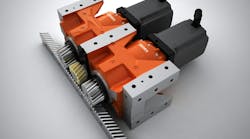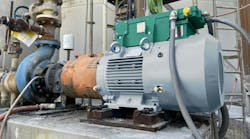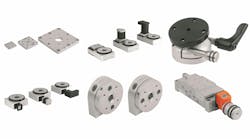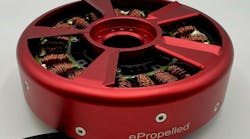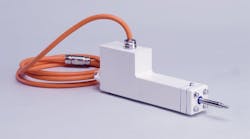Drives Receive Safe Features
When paired with a Safety PLC (also available from KEB America), KEB Functional Safety Drives provide a cost-effective control and automation solution with standardized safety features.
New generation drives from KEB, like the S6 Servo Drive, feature SIL3 Safe-Torque-Off (STO) as standard. In addition to STO, Safety Module 1 adds Safe-Brake-Control and the newly designed Safety Module 3 will add safe motion functionality per IEC 61800-5-2.
KEB drives with Safety Module 3 use Fail Safe over EtherCAT (FSoE) to control supported safety functions via the bus. Safety levels, such as limits, can be set and changed, and Safe Limited Speed and Safe Limited Position information can be transferred via the network. These features can improve reaction time in e-stop scenarios and reduces the need for separate protective devices or additional wiring.
Function Safety Drives from KEB America are part of a full range of safety products that include Safety PLCs, Safe I/O modules, and Safety PLC Programming software as well as motors and brakes.
Integral gearmotors from KEB are offered with Safe encoder options, and can include a spring-set brake with microswitch. KEB’s TA Series of servo motors also has a spring-set brake option, as well as Safe feedback in single and multi-turn variants. The available spring-set (or spring-applied) brakes provide power-off brake engagement and are ideal for safety critical applications.
Safe Motion from KEB America offers many benefits to machine builders and controls engineers. Safe Functions can be called over the EtherCAT bus, so it is possible to use less wiring and contactors. Safety monitoring can be done by individual drives - as opposed to the central Safety PLC - resulting in faster response times during crucial operations, like e-stops. Productivity on the line is increased as Safe Modes can be activated without shutting down or removing power to the machine. All of this leads to cost savings over a traditional safety solution.

